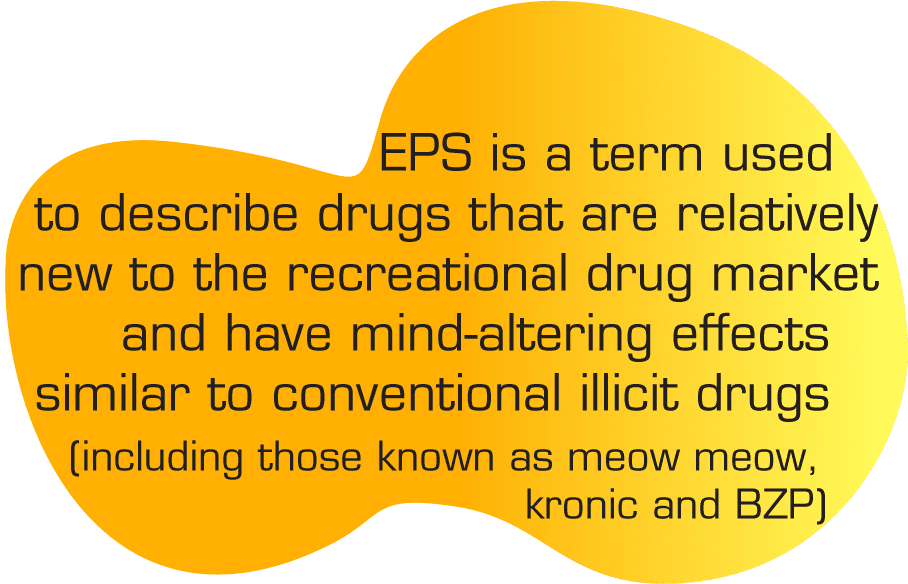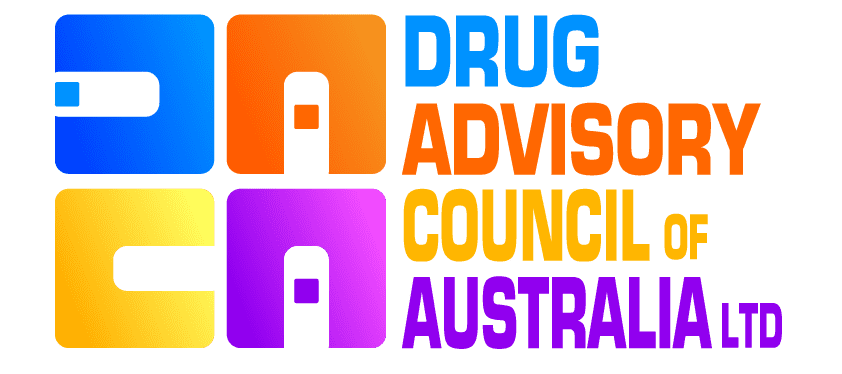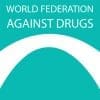Drugs Explained


Legal Highs
What are new and emerging psychoactive substances?
There are multiple terms in use globally that refer broadly to new, novel or emerging drugs. Terms such as ‘designer drugs’, ‘research chemicals’ and ‘emerging psychoactive substances’ are often used interchangeably with ‘NPS’ (new psychoactive substances), however as outlined below, they have slightly different definitions.
New Psychoactive Substances (NPS)
These substances are not controlled by the 1961 Convention on Narcotic Drugs which may pose a public health threat similar to drugs that are listed in this convention.
Designer Drugs
Designer drugs are manufactured to mimic the effects of a controlled substance. These close copies are referred to as ‘analogues’. The purpose of creating these analogues is to avoid detection or classification as ‘illegal’.
Emerging psychoactive substances (EPS)
This is a term used to describe psychoactive drugs that are relatively new to recreational drug markets. This term captures all NPS as well as drugs that may not be newly invented, but have recently experienced a resurgence, or increase in use.
Research Chemicals

These are experimental chemicals not approved for human use; many of these chemicals were discovered in labs and examined in test-tubes (in vitro) or in low-level animal studies.
The terms ‘synthetic drugs’ and ‘legal highs’ can cause confusion when used to refer to NPS. This confusion stems from:
- the fact that many ‘traditional’ illegal drugs, such as LSD, methamphetamine and MDMA (ecstasy), are also synthesised; and
- Many countries (including Australia) have moved to prohibit these substances, despite remaining ‘legal’ at the international level.
More recently, liquid products containing synthetic cannabinoids have emerged for use with electronic cigarettes.
While the side effects of cannabis are well known, information on the health risks associated with synthetic cannabinoid use remains limited. Research to date suggests that the adverse effects of synthetic cannabinoid use may include:
- cardiovascular events
- acute kidney injury
- seizures
- psychiatric problems
- persistent severe vomiting
- abnormally fast heartbeat (tachycardia)
- agitation
- nausea
The NPS market has grown rapidly over the past decade and currently encompasses hundreds of different substances, which can be classified into a number of different categories (outlined below). In Australia, synthetic cannabinoids have been the most widely used NPS, although stimulant and psychedelic NPS are also relatively common.
Synthetic cannabinoids
Synthetic cannabinoids (eg, Spice, K2, Kronic, Northern Lights, Kaos) are substances that are functionally similar to the primary substance responsible for the psychoactive effects of cannabis. They are generally sold in foil sachets and typically contain 1-3 grams of dried plant matter onto which the synthetic cannabinoid has been sprayed.
Phenethylamines
Phenethylamines refer to a class of drugs with psychoactive and stimulant effects and includes amphetamine, methamphetamine and MDMA (ecstasy) — all of which are controlled under the 1971 Convention of Psychotropic Substances and are therefore not classified as NPS.
Compounds of the NBOMe series are not active when swallowed, and are usually taken by placing them under the tongue (sublingually). There have been reports of NBOMe being sold as LSD (when deposited on blotter paper LSD and NBOMe are virtually identical in appearance), which is concerning given that the effects of NBOMe are active at very low doses.
Information on the health risks associated with use of these drugs is limited, however research suggests that the adverse effects of NBOMe toxicity may include:
- cardiovascular complications
- agitation
- seizures
- elevated body temperature (hyperthermia)
- imbalance of acids in the body (metabolic acidosis)
- abnormally fast heartbeat (tachycardia)
- organ failure
- death
Synthetic cathinones
Examples of synthetic cathinones in Australia include Mephedrone (‘Meow Meow’, ‘M-CAT’); Methylone; MDPV (‘Ivory wave’); alpha-PVP (‘flakka’). Mephedrone is perhaps the most well-known of the synthetic cathinones. Mephedrone is mostly available in powder form, although it can also be pressed into pill form, and is usually snorted or ingested. Research suggests that some of the health risks associated with the use of synthetic cathinones may include:
- anxiety
- agitation
- chest pain
- abnormal sensation, typically tingling or prickling of the skin (paraesthesia)
- heart palpitations
- seizures
- abnormally fast heartbeat (tachycardia)
- high blood pressure (hypertension)
- dependence


Tryptamines
Some tryptamines are natural neurotransmitters (brain chemicals), but most are psychoactive hallucinogens found in plants, fungi and animals.
It is similar to DMT in effects, however it is substantially more potent and is usually smoked or snorted. Little is currently known about the short and long-term health effects of tryptamine use.
Piperazines
Piperazines have been described as ‘failed pharmaceuticals’, and are frequently sold as ecstasy due to their central nervous system stimulant properties.
They are usually available in pill, capsule or powder form and are usually swallowed.
Benzylpiperazine (BZP) is one of the most commonly reported piperazine NPS and was initially developed as a potential antidepressant drug.
However, it was found to have similar properties to amphetamine and was therefore considered liable to abuse.
Many of the piperazine NPS have limited information regarding the short and long term health effects of their use.
Research suggests that some of the health harms associated with BZP and TFMPP use may include:
- headaches
- tremors
- poor concentration
- palpitations
- vomiting
- anxiety
- confusion
- increased body temperature (hyperthermia)
- destruction of muscle cells
- kidney failure
- seizures
- dizziness and dilation of the pupils
- insomnia
- urine retention
The Effects
There is currently limited information available on the short and long term health risks associated with NPS use, their addiction potential, interaction with other drugs and their impact upon driving behaviour. Some of the adverse effects of specific NPS are outlined in the sections above.
A difficulty of understanding the effects of these new substances is that they are not always consumed intentionally.
For example, it was reported that the NPS 25I-NBOMe was being sold as LSD in Australia.
Monitoring systems that do not include forensic analysis of drug samples or testing of bodily fluids will not be able to accurately match reported effects and adverse events




